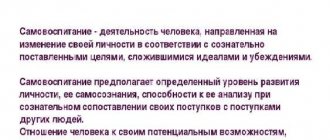Save article:
The article explains:
- Interpretation of sign language
- Benefits of Reading Sign Language
- What does gesturing mean?
- Learning the correct gestures during a conversation
- 4 exercises for training gestures
- Final Tips for Gestures During Conversations
Gestures during a conversation can say a lot about the speaker.
From the outside, the swings of the arms already seem to be the norm; in fact, each movement has a certain meaning. To decipher it, you still need to learn; there are certain exercises and rules. But it’s not enough to watch other people; you also need to control your gestures so that it doesn’t turn out that you have one thing in your head, but your hands show something else. Believe me, partners pay attention to them first of all during interviews and in business conversations. In order not to worry too much, we will now give you some recommendations.
Interpretation of sign language
What role does gestures play during a conversation? According to scientists, ancient people communicated with each other using gestures even before they learned to speak.
Please note: we gesture most often while we speak. Those who listen use gestures only on rare occasions. This observation confirms that gesturing is an element of speech. If a person who is talking about something that worries him greatly has his hands tied, he will still use gestures: facial expressions, nodding his head, helping himself with body movements.
Interpretation of sign language
Hand gestures during a conversation are one of the tools of interethnic communication that helps to understand other people even without knowing their language. When using gestures, you should be very careful, as they can have completely opposite meanings for representatives of different nationalities.
- When we want to answer a Bulgarian’s question in the affirmative and nod our heads, he will take this as a refusal. Conversely, a negative shaking of the head from side to side in Bulgaria will be perceived as agreement.
- A gesture often used in our country, when the index finger and thumb form a ring (“Ok”), is considered indecent among the Greeks, Turks or Brazilians, and for a resident of France such a gesture would be offensive, since it is understood as “You are a complete zero.”
- For a Greek, the outstretched palms of a person who wants to say: “Stop, stop” will mean: “Fuck you...”.
- You can seriously offend an Iranian or a Thai by giving them a thumbs up. In these countries, such a gesture has the same meaning as a raised middle finger for a European.
Free online intensiveYour Path to IT starts here
More details
- Fingers forming the letter V signify victory for many, but if you use this gesture in a conversation with a British or Australian in such a way that the palm is directed towards the interlocutor, he will think that you have “sent him to hell.”
- For temperamental representatives of southern peoples, active gesticulation during a conversation is normal. But residents of Scandinavian countries will consider an interlocutor who waves his arms excessively to be ill-mannered or overexcited. In the latter case, such a person will be kept away until he calms down.
A quote from the work of the philosopher Oswald Spengler, “He who lies in the language of words, betrays himself in the language of gestures to which he does not pay attention,” would be appropriate here.
Benefits of Reading Sign Language
Human gestures have a unique significance in communication. A particularly observant person is able to analyze a person’s personality and his intentions by gestures, although many are not even aware of this.
For example, when conducting an interview, the recruiter, in addition to the resume, considers the candidate by gestures. A candidate for a vacancy may believe that he is ready to take on the position of head of the sales department, as he has such qualities as efficiency in work and communication skills. But in fact, he sits in front of the recruiter, with his legs tucked under him and his arms crossed over his chest.
What might an employer be thinking about? Only that the person has obvious problems with communication! Therefore, it is better for him to politely refuse the job.
What does gesturing mean?
Knowledge of sign language is necessary for many specialists in everyday work. This skill is required of top managers of large companies. In the West, even middle-class specialists need to have this knowledge.
A package of closed documents from GeekBrains paid courses
Alexander Volchek
Head of IT Training
Together with career building experts, we have prepared documents that will help you make the right choice and determine which IT profession is right for you.
Thanks to these guides, 76% of our students were able to find the in-demand profession of their dreams!
Soon we will remove them from public access, hurry to download for free:
Guide to IT professions
5 professions with skills and average salaries
100 thousand rubles for 100 days with a new profession
List of 6 popular professions with earnings from 100 thousand rubles
All professions that exist in the IT field
63 professions and the skills required for them
Critical mistakes that can ruin your career
We collected 7 common mistakes. Everyone should avoid them!
Already downloaded 11681
Now let's talk in more detail about what human gestures say:
- Anyone who feels awkward, nervous or embarrassed when communicating does not know where to put their hands, tries to occupy them with something. It may seem that they are bothering him.
- A person who is lost in his thoughts will look at various imperfections, some scratches.
- If the interlocutor is skeptical or doubts something, he usually wraps his hair around his finger and twirls the tip of his mustache. Also, such a person may touch himself by the ear or the tip of his nose.
- Someone who is overly confident will scratch or stroke their belly and chest.
- A person who cannot concentrate, is bored, may nervously tap the table with his hand, play with his fingers, shake or wiggle his leg. He usually twirls something in his hands. May also crack his knuckles out of habit.
- An interlocutor who is daydreaming, passive, or lacking energy usually rubs his temples or forehead, and may stretch his legs and arms.
- A person who is accompanied by internal conflict is afraid of something. He chews on the pen.
- Someone who is dominant or used to commanding holds his head with his chin up and usually clasps his hands behind his back.
- The interlocutor, who is aggressive, angry, but trying to restrain his emotions, clenches his hands into fists.
- A person who is closed from others, is not in the mood for contact, puts his elbows on the table and covers his mouth with his fists or intertwined fingers.
How to correctly use oratorical gestures. Gesture development
07/05/202107/05/2021 Elena LitvinenkoPosted in Oratory
Oratorical gestures are as important for public speaking as the right words. Why do speakers often not “give free rein to their hands”? Because people tend to follow the lead of established stereotypes.
Have you heard or read somewhere that gesturing with your hands will take away the weight of your speech and make you look awkward and fussy? Do you watch TV, where you constantly see the hands of politicians clenched into a lock and perceive such a model as a standard of solidity?
How do your arms behave: do they hang limply along your body and “don’t move around”? Or do they make uncontrolled small monotonous movements with their hands because they don’t dare to do more? Stiffness of the hands and repeated obsessive gestures are a consequence of internal tightness, unpreparedness and insufficient attention to the speaker’s tools.
Hand gestures activate the speaker's brain and help the audience understand the speech.
Research by scientists has long proven the connection between the development of hands and the brain. The works of domestic physiologists (V.M. Bekhtereva and others) confirmed that hand movements influence the development of speech. Hand gestures help relieve tension and even fatigue, eliminate tight lips and improve the pronunciation of many sounds.
The Broca's speech center in the human cerebral cortex is activated by impulses that arrive as a result of hand gestures. It is he who controls the muscles of the face, larynx, tongue, jaws - that is, the articulation and partly the vocal apparatus. This area of the brain ensures correct word order and the formation of meaningful statements.
Of course, the process of pronouncing a speech is much more complex, because speech is also associated with thinking, memory, and emotional regulation, which controls the intonation, tempo and volume of the voice. And also verbally transmitted information is inextricably linked with facial expressions and gestures. Now, I hope, it is clear that physiologically a person is designed in such a way that hand gestures are an integral process of expressing one’s thoughts and emotions.
Simply put, gesturing makes your brain work more efficiently. By gesturing, the speaker helps himself to think in the process of public speaking. At the same time, thoughtful gestures also have a beneficial effect on speech perception. This was confirmed by experiments by psychologists from the University of Chicago, where the results of explanations accompanied by gestures and those without them were compared.
How Gestures Contribute to Successful Public Speaking
Firstly , gestures in public speaking provide the speaker with a state of confidence. If your elbows are literally “sticking” to your sides, then your body language is conveying to the viewer that you are afraid or too worried. After all, when experiencing fear, a person most often wants to shrink and take up as little space as possible. If you demonstrate a wide open gesture from the first phrases, lifting your elbows from your body, you will take up much more space. Thus, by opening up externally, you influence your internal state and feel freer and more confident.
Secondly , gestures help keep the audience's attention. A good gesture, the one that is called eloquent, does not exist on its own. It helps the speaker highlight important thoughts in words and visualize information. You should not rely entirely on prepared visual aids: presentations, flipcharts or posters.
When I was a student of the acting department, the director of our course often said that a violinist’s instrument is a violin, a builder’s instrument is a hammer, a writer’s instrument is a word, and for an actor, the instrument is himself: his movements, speech, gaze, feelings. The speaker is not a writer; to influence the audience, he needs not only the word, but also himself - his voice, facial expressions, gaze and gestures.
Thirdly , gestures enhance the speaker’s energy. Anyone who comes out to speak in front of an audience broadcasts not only information, their thoughts and feelings, but also energy. If you are passionate about the topic and speak emotionally, then most likely you have a need to supplement your story with gestures.
You probably know that all famous speakers knew how to persuade, inspire and energize their audience. It’s good when there is enough internal energy inside from a light injection of adrenaline into the blood. What if there is nothing to give out? Try repeatedly using both hands to make a simple gesture indicating “More, more!” with acceleration, and you will feel yourself becoming more energetic.
I think now you will agree that for successful public speaking it is important for a speaker to master gestures, because with gestures speakers look much more natural, lively, confident and energetic.
What are the oratorical gestures and how to use them
Most often, by the word gesture we mean movements of the arms and hands, because these are the most expressive and eye-catching movements. Moreover, the word “gesture” came to us from Latin, where gestus means body movements, that is, it has a broader meaning. Gestures are any body movements of the head, shoulders, arms, hips and legs in order to emphasize the meaning of words or even replace words with them.
We use well-known hand gestures in everyday life:
- a hand extended in greeting or asking to give something;
- as a sign of agreement, we show our fingers connected in an “okay” ring;
- We praise and approve by giving a thumbs up.
People nod and shake their heads to give a positive or negative response, bow slightly in response to praise or a compliment, and the position or movement of their feet can also be quite eloquent.
In addition, it is known that the largest share of information comes to be processed by the brain through vision (about 60%). This is why nonverbal cues, otherwise known as body language, are so important. We tend to unconsciously become wary and feel distrustful when words and gestures do not correspond to each other.
If we are greeted with our arms crossed on our chest (this is a closed defensive posture), then despite the smile and words that we are happy to see us, we doubt the sincerity of the words. When we notice negative head nods when arranging a new meeting, we get the feeling that this meeting is unlikely to take place. Peter Collet's research on this topic is very informative, and I suggest you watch his film “Body Language”.
Thus, gesticulation is characteristic of absolutely everyone. It is nonverbal messages that are the influencing factor that subconsciously evoke positive or negative emotions in others.
Considering all this, it is not clear to me how one can speak in public without gestures, use closed gestures, have chained or limp hands. That's why you should definitely learn how to control gestures.
The speaker's performance is like conducting an orchestra; he controls the audience like a conductor controls the musicians. With his nonverbal signals: gestures, facial expressions and posture, he creates contact with the audience and suggests whether to agree with what was said or question it.
Oratorical gestures have a certain classification:
- Emotional gestures convey feelings: raised shoulders and spread arms - bewilderment, arms raised up rhythmically moving - joy, light clapping at neck level - delight, etc.
- rhythmic gestures to emphasize attention; they emphasize logical stress, pauses, acceleration and deceleration of speech. Most often this is: conducting movements with the hands or vertical movements with the edge of the palm, in particularly striking cases even with the fist.
- A symbolic gesture replaces words. For example, waving your hand as a sign of farewell, joining your palms as a symbol of friendship. And hands resting on the sides are evidence of disobedience and disapproval.
- Iconic gestures exist to enhance speech visually, because sometimes it is easier to show than to explain. Gestures of magnitude, raising or lowering are often used.
- Pointing gestures are those that indicate direction. They can point to the subject in question, a presentation slide, or a visual aid.
All these gestures are appropriate in the appropriate context as needed.
Important point! There must be pauses between gestures! You can’t continuously wave your arms, because not every statement needs to be emphasized.
Speaker Gestures to Avoid
Agree that behavior during public speaking should non-verbally communicate confidence and goodwill to the audience. At the same time, there are many individual gestures of the speaker, which may give him individuality, but create a psychological barrier between him and the audience.
Frequently repeated gestures that do not carry any meaning are called parasitic gestures. They manifest themselves especially strongly when the speaker is nervous, and this not only does not add a good impression of the speech, but also distracts the audience from the content of the speech.
The most noticeable and unpleasant of them is stepping from foot to foot. It’s easy to get rid of this prancing like a horse, the main thing is to fix it in yourself. The rotation of some object in the hands also makes the viewer terribly nervous.
It is very helpful to record a training video and analyze it impartially. You may notice how you constantly adjust your hair or glasses, or rub your nose or chin.
If you find such gestures, try to consciously avoid them. Well, if it doesn’t work out, create conditions where it’s impossible to do it: tie your hair up or pin it up, take off your glasses. And some gestures can be replaced with similar ones, but carrying a semantic load. For example, don’t straighten your tie, but put your hand on your heart, don’t rub your chin, but take a thoughtful pose.
Gestures that you should try to get rid of:
- Small and “unfinished” gestures, most often only with the hands, which are more like convulsive twitches;
- Monotonous and repetitive gestures are also easy to detect on video;
- Too exaggerated and unnatural hand movements, as if seen in a silent movie;
- The fingers are connected in a pinch when the palm is closed - they do not contribute to establishing contact with the viewer;
- Gesture with only one hand (since the other is occupied with the projector remote control, a piece of paper or a pen). Such speakers are jokingly called “one-armed bandits,” and it doesn’t look the best;
- As well as sharp and symmetrical, so-called “mirror” gestures.
Watch a video with a clear example of this type of gesture in a humorous style.
Exercises for developing hand flexibility and beautiful oratorical gestures
Well, there was more than enough theory - start with exercises for the development of gestures that will help you develop and ingrain eloquent gestures.
Exercise “Mill”
Raise your elbows to shoulder level, and leave your forearms “dangling” below. From this position, rotate your forearms, describing circles in the following directions:
- to each other 8-10 times;
- from each other 8-10 times;
- symmetrically, first in one direction, then in the other direction, also 8-10 times.
After this, you usually feel slight fatigue in the shoulder muscles. If you don’t feel it, then you can add the number of rotations. It is also very useful to massage and warm up your hands with exercises so that they allow you to make soft and smooth gestures.
Game “Crocodile” (otherwise Associations or Showing off)
In my student years, not a single party was complete without this game. Perhaps it can be called one of the best for the development of “visual” gestures. In 2010 - 2012, this entertaining game was even picked up by television.
Watch a fragment of the game show on Muz-TV with the participation of the “Factory” group. The rules for the TV version are different, but the essence is the same. It is necessary, within a certain time, using only gestures and facial expressions, to show the word that the presenter has made.
Unfortunately, when the game is played against time, the participants point out objects. But even so, you can immediately notice who has developed gestures and who needs to work on it.
You can think of not just a word, but a whole phrase: a proverb, a movie title or a line from a song. Guessers must guess what word is hidden behind the pantomime. The demonstrating participant uses and, at the same time, develops two types of gestures:
- Fine gestures with which he shows the hidden word.
- Pointing gestures that approve the correct versions and cut off the incorrect ones. Or it shows in which direction to develop a thought, to look for synonyms and similar concepts.
When the word is guessed, the one who guessed it becomes the show.
Exercise “Tell and show”
In the exercise, you need to show the spoken text with your hands, using figurative gestures. For training, you can take any literary text, for example, A.S. Pushkin “The Tale of the Goldfish” or “Near the Lukomorye there is a green oak”. Watch the video where I shared a couple of exercises that will help warm up your hands to make them flexible. And I demonstrate how to do this exercise.
Interested in looking confident and professional as a speaker? Then you need to start developing natural and eloquent oratorical gestures as quickly as possible. In the program of the public speaking course “Speak freely and convincingly!” the development of gestures and the search for the most convenient hands for each basic position are provided.
See the course program
This may be useful to you too:
How to prepare to wish well on the holiday
What does timbre depend on and how to change your voice in life
How to protect and not lose your voice - practical advice from professionals
Speech voice development: exercises for changing pitch
Learning the correct gestures during a conversation
Australian writer Alan Pease has been called "Mr Body Language". This is due to the fact that he is a professional in gesture recognition. He has enough knowledge to understand a person’s thoughts and feelings, paying attention only to gestures. In his research, he reveals all the secrets of body language. Alan Pease not only teaches you how to speak this body language correctly, but also tells you how to fake it. From his book you can learn how to use gestures not to give yourself away in a certain situation, to “tell a lie.”
Correct gestures during a conversation are used by experienced speakers to win over the audience and evoke the necessary emotional reaction in listeners.
To do this, your gestures must meet certain requirements. It is necessary that gestures are smooth and soft. Hand movements should occur symmetrically and at the same distance. It will be wrong if gestures are done with one hand. Both hands should always be used. One of them cannot be in a pocket or hanging along the body. To show self-confidence, the speaker needs to show a large gesture. If movements are restricted, this indicates constraint and complexes.
Learning the correct gestures during a conversation
Everything has its own measure that needs to be taken into account. A broad gesture is appropriate only if you are telling something to a large audience. Otherwise it will look stupid and ridiculous. In a small audience, this may be perceived as mindless waving of the arms. Also, do not use large gestures if the speaker is excited or has poor self-control.
To train the symmetry of hand movements, you can use the “left-handed” exercise. It is necessary to change hands with roles. That is, perform the usual actions of the right hand with the left. This exercise will further help you control your left hand as professionally and effortlessly as your right. For example, normal use of a computer mouse will not be difficult for you if you do it with your left hand.
Gestures during a conversation should be “open” . That is, when speaking, your palms should be turned towards the audience. If they are turned with their backs towards the opponent or are completely hidden behind the back, in their pockets, then this is a closed gesture. It is known from history that this position of the hands makes a person feel dangerous. Nobody knows what you hide in them. On the contrary, an open gesture wins over the listener and shows that you have nothing to hide.
Exercises for training gestures
The following exercises will help you make your gestures clear, vivid and imaginative.
Guess the word
Here you need a company of at least three or four people. One person comes up with a word (or phrase - for example, a proverb) and “shows” it using gestures. The rest must guess what the word is;
Mirror - imitating an experienced speaker
On the Internet, on the same YouTube, you can find many speeches by speakers with expressive gestures. For example, the same Alan Pease, or Brian Tracy, or Oprah Winfrey. We watch the recording and “make monkeys” - we copy the facial expressions and gestures of our model. It is recommended to devote at least half an hour a day to this exercise;
Soft gestures
First, we stretch the wrists of each hand, shake them, relax them, and then write figure eights with our hands and make waves;
Stroking movements
We touch all objects softly, affectionately, as if we were picking up not a teapot, or a book, or a cup, but a small, fragile kitten;











